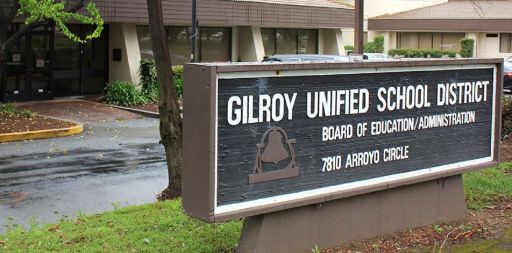Gilroy Unified School District has made progress in decreasing the number of students expelled over the past decade. But an activist group says that some district policies negatively impact Hispanic and Black students’ education at a disproportionate rate.
Members of Gilroy Community Action on Policing gave a report to the GUSD Board of Education on Sept. 3, urging the board to rethink school resource officers and the district’s “zero tolerance” policy.
According to Superintendent Deborah Flores, the district was expelling roughly 100 students annually in 2007 and 2008. But in recent years, that annual number has averaged below 20, with 15 expelled in 2019-20, even with overall enrollment remaining steady.
Flores pointed to the district’s “proactive measures,” such as staff training, restorative justice programs and other supportive initiatives, as a reason for the decrease.
“We share the goals of reducing suspensions, expulsions and youth arrests,” she said. “That’s a top priority, and something we’ve been working on for years.”
Of the district’s enrollment of 11,830 in 2018-19, 70 percent of the students are Hispanic, according to Ed-Data, a partnership of the California Department of Education, EdSource and Fiscal Crisis & Management Assistance Team. That same year, 16 Hispanic students were expelled, compared to one white student, according to Ed-Data statistics.
GCAP organizer Jacob Yoder-Schrock said the district’s student safety efforts emphasize surveillance and punishment, which hinder students’ ability to learn.
“These safety policies actually end up making many students feel less safe,” he said. “Punishment is easier and requires a lot fewer resources than prevention and rehabilitation.”
The presence of school resource officers on campus, according to GCAP, can cause anxiety and fear for Hispanic and Black youth who already live in “overpoliced neighborhoods.”
GUSD had two school resource officers, but the contract with the police department was not renewed for the 2020-21 school year because students will not be on campus due to Covid-19, according to Flores.
Gilroy Police Chief Scot Smithee said the success of the South County Youth Task Force, a partnership between the cities of Gilroy and Morgan Hill, their respective school districts and other community organizations, has helped the city’s youth arrest rate decrease by 64 percent over the past decade. The task force, which was formed in 2012, aims to provide programs that steer young people away from gangs and other criminal activities.
Smithee said the school officers work with students to provide them with the resources they need, rather than issuing citations and making arrests as was their approach in earlier years.
Even with a second school resource officer hired about five years ago, citations continue to decrease, according to Smithee.
He urged the members of GCAP to bring their concerns to the South County Youth Task Force, adding that he was disappointed to hear the group’s suggestions without them having consulted the task force.
“To have an outside group coming in and say, ‘well, we don’t care about what anyone’s done, we just want to make this demand,’ I think is unfair,” he said. “If we want to look at specific things and come up with suggestions about how we can improve in the future, I’m all for that. But I’m not all for trying to end a very successful program without that discussion.”
Micki Scagliotti said one of her children was suspended in the first grade for having brought a wooden cork toy gun in his backpack, adding that the district’s zero tolerance policy caused him to mistrust staff for most of his education.
“That first grade incident tainted his education and caused my child to feel singled out as a troublemaker without doing anything malicious,” she said.
Most public comments during the meeting were in favor of reallocating funds for school resource officers to preventative programs, with one Christopher High School alum saying the district needs to address the root issues that cause school shootings and other incidents in the first place.
However, Melissa Vernon said removing school resource officers and the zero tolerance policy would be detrimental to the students’ and staff’s safety when they return to campus.
“Without them, you will be opening the doors to chaos, and the ones who will suffer will be the staff and students who appreciate the hard work being done by the resource officers,” she said.
No action was taken during the Sept. 3 meeting, with the presentation being informational only.
Trustee Linda Piceno said she never received any concerns about school resource officers during her six years on the board, but said the district needs to be more transparent in the process if it does decide to bring the officers back.
Trustee Tuyen Fiack said the district’s expulsion statistics reveal an “equity issue” among ethnicities.
“What that tells me is there is something in our system that is going wrong,” she said. “Whether it’s implicit bias or whatever that may be, something is not right.”














